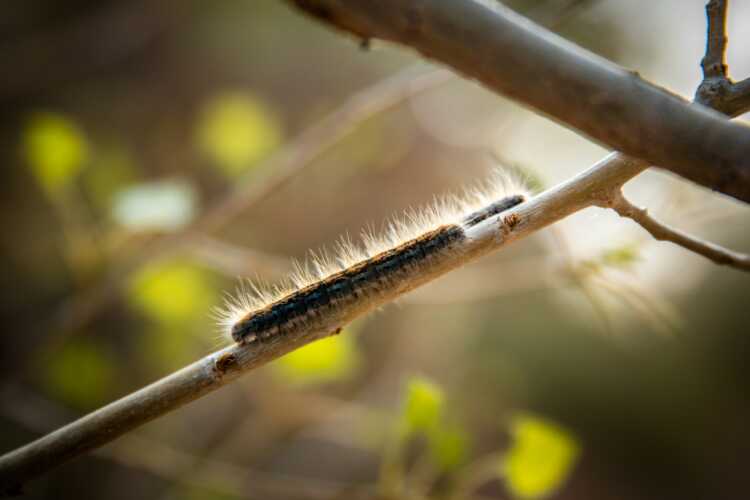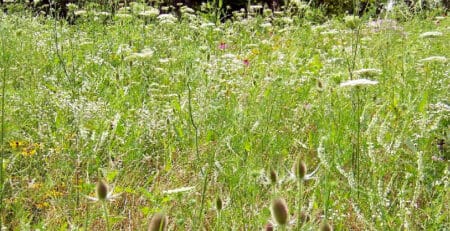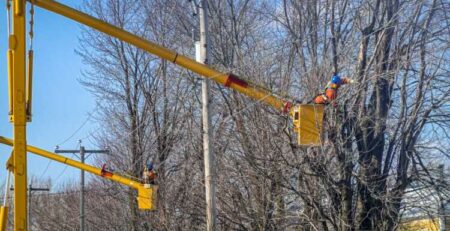How to Get Rid of Tent Caterpillar?
Tent caterpillars can be a problem for many different species of shrubs or trees that tend to grow a broad leaf. While doing so, they produce webs that are unsightly, and could be called tents. When the amount of tent caterpillars on your trees and shrubs increases, the caterpillars can remove leaves from trees. This causes them to stunt their growth. You are likely to find an infestation of tent caterpillars on fruit and ornamental trees. So you may be wondering how it is you can eliminate the tent caterpillars.
Identifying them sooner rather than later, accurately identifying the stage of infestation and understanding the life cycle of the tent caterpillars, and using the appropriate action can help you to tackle the situation once and for all. With that in mind, here are some of the things you need to understand and consider when learning how to get rid of tent caterpillars.
 The Life cycle
The Life cycle
During the later part of spring through to the early summer, you would find that moths that are female will deposit eggs on mass to tree trunks and smaller twigs. The moths will use a sticky substance that helps the egg to stick to the trees. This is known as spumaline. The spumaline acts as a cover around the eggs that is tough. This is to ensure they are protected from any elements that might damage the eggs as they incubate to turn in larvae. The eggs stay on the tree throughout the late summer, the autumn and the winter months ahead. Caterpillars become larvae and hatch in the spring the following year, which is usually around the time the leaves on the trees and plants start to form again. A few days after they hatch the caterpillars will feed on those leaves.
Tent caterpillars will form small webs, and over time you will notice they get bigger. The web is usually identifiable at the base of twigs and trunks,and is found to protect the larvae in the night or in bad weather. As the larvae have to move away from the tents to feed, it can mean that the tents can be damaged. They tend to stay close to the area in which their tents are formed to keep things protected.
As they grow, the larvae can shed their skin often. This is throughout the growing stages, the caterpillar size changes between a quarter inch to one and three quarter inches in length. The colour pattern also changes.
Adult tent caterpillars are yellow/brown moths. They have two identifiable diagonal markings on the front wings. Their wingspan is about one inch. The moths are also attracted to light. It may be surprising that although the process from eggs to tent caterpillar/moth can take a year, the fully formed adults only live a matter of days. They use this time to mate and then lay their eggs. They don’t feed during this time.
Biology and the things you might need to know
You will find that there are many different species of tent caterpillar as well as different stages in their one year life cycle. They can be extremely colourful and be around one and three quarter inches when they reach adult stage. You will notice long hairs on the side of their bodies. It is worth mentioning that not all tents formed on twigs and branches means there is an outbreak of tent caterpillars. It could be webworms instead. The tent caterpillars do have distinguished features as they grow. Webworms can produce tents more in the same way as tent caterpillars and produce them in the later summer or autumn time.
Managing the situation
When it comes to dealing with the situation of tent caterpillars, you need to think about how you approach it. There are many ways you can deal with it. You should consider the management option judging the defoliation, the webs and tents that you see, and the annoyance and inconvenience they create. Your best option might be a combination of chemical and natural techniques which are shared below. This can ensure that you deal with it quickly and effectively.
Cultural control
In the winter where you are likely to start pruning your trees, it would be a good idea to inspect the tree. Specifically looking for eggs or signs of infestation. They can look like swellings on the tree branches or twigs. It should be obvious when it comes to noticing changes on the trees, especially as there will likely be no foliage present. Taking on normal pruning procedures sometimes means the tent caterpillar eggs are removed naturally. Doing this before they hatch can avoid any further problem in the future. By doing so, you should then get rid of the eggs you have taken from trees. This can be one of the easiest ways of handling a small outbreak of tent caterpillars in your garden.
Sometimes going back to inspection of the tree, you may notice pruned twigs that contain webs. Sometimes there are areas you can’t reach, or would prefer not to prune, then you could destroy the webs by hand. You could do this by using a pressure washer or water spray, or even a long pole. This can be very effective to help you deal with those hard to reach areas. It isn’t recommended to burn any web or caterpillars as it is seen as dangerous and not the correct form of action to take.
If you see any caterpillars that fall from the tree during pruning or other methods, then kill the caterpillars by crushing them. Another option would be to place them in a bucket of soapy and warm water. You could also dispose of any dead tent caterpillars that fall on the floor. Doing this can often be enough, but it is certainly one of the easiest ways and also least intrusive ways when it comes to the trees.
A Biological option
If you want another natural method of dealing with tent caterpillars, you might want to use particular insects. There are certain insects that can help to reduce the number of tent caterpillars. There are specific lizards, some birds and even insects that feed on tent caterpillars so more research into this option could be worthwhile. This is a natural way of dealing with the issues you may be facing with tent caterpillars.
Chemically controlling the issue
Another option to consider would be looking at a chemical solution. Often this can be seen as a last resort but one of the methods that is most effective. However, before embarking on chemical control for tent caterpillars, it might be worth considering that although some leaves have already been fed upon by tent caterpillars will be damaged, trees that have lost their leaves earlier than usual most likely put on new leaves. Be mindful that it might not be worth pursuing chemical control if the tent caterpillars have had time to feed. This can often mean they have completed their development. However, the tents that from on the twigs and branches are not ideal, and so removing them specifically may still be your ultimate goal. The tents are designed to be resistant to bad weather, so will remain on the trees unless you remove them. So this should be the first port of call to help you deal with the situations.
Try insecticides
Insecticides can be used to help with the webs you see formed in the tree. This can be more of a spot treatment. It could prove to be effective when dealing with tent caterpillars in small doses. A good idea would be to apply the insecticide in the morning or evening. This enables you to concentrate the insecticide spray on the tents when all of the caterpillars have congregated together. Making the treatment much more effective.
In the winter months, it could be worth trying to smother the eggs by spraying them with dormant oil. This can be seen as an effective way to allow the insecticide to spread and coat the dormant insects and eggs. You can then manage the area of infestation much more effectively. The product you choose will have a list of relevant information including what species they are most effective with. Doing research to ensure you choose the right insecticide is important to ensure that you thoroughly get rid of any infestation that you have
Some naturally derived products will include active ingredients that could prove very beneficial and useful when it comes to tackling tent caterpillars. These products tend to be more effective on smaller tent caterpillar stages. Consider the stage you may be at by the season and months so that you can determine the best course of action. When spraying pesticides try and ensure the plant is thoroughly covered so the product will be picked up and eaten by the caterpillars.
Plant-derived insecticides
Plant-derived insecticides tend to be inclusive of active ingredients. It is worth remembering that some plant-derived insecticides might work best at different stages. For example, they may need to come into contact directly with the tent caterpillar or they may need to be ingested by them.
Try pesticides
There are some long term pesticide products that provide quicker results which are proven to be more of a long term solution than some plant-derived insecticides. They also work on all stages of the tent caterpillar. However, some products are also dangerous to other insects that actually prove to be beneficial in your garden, so you do need to consider that fact. This is the risk that you take when it comes to using pesticides. Some pesticides hold active ingredients which can be damaging to other wildlife and even to other plants that it can be affected. After all, the pesticide can be airborne and you don’t always have control of what the coverage is. There are professional services you can enlist the help of which will have access to specific products. Using experts to do this can make things easier on you rather than attempting to action this yourself.
Pesticide users have a responsibility for the effects pesticides have on their own plants. You also need to consider the effect it could have on your home. As they can be airborn you need to be considerate of your neighbours. Perhaps taking into account their own plants and their properties. For the safest way to use pesticides in your garden for your own infestation and plants, it is always a good idea to sdo plenty of research and read pesticide instructions carefully.
So there you have it. Some of the best ways that you can get rid of tent caterpillars effectively, and having a greater understanding on how they become a nuisance in your garden.





